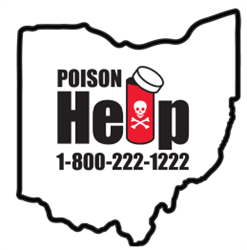Cleaning products and poison concerns: Staying safe during COVID-19
During the pandemic, fear of spreading germs has turned average people into virtual germaphobes. Most of us are cleaning, disinfecting, and sanitizing every high-touch surface in our homes, cars and workplaces. But going too far or failing to use safety precautions can also pose serious risks.
Calls to the Drug and Poison Information Center for exposure to cleaners and disinfectants increased dramatically in March and April. Cleaning products have the potential to be toxic if used incorrectly. In fact, it is the #2 reason why people call poison centers in the US. Some concerning trends include mixing cleaning products, children getting into dangerous cleaning supplies, and both children and older adults accidently ingesting cleaning products.
Some examples include a one-year-old caught possibly ingesting hand sanitizer, a 63-year-old who mixed bleach, ammonia and multi-surface cleaner together in hot water and inhaled the fumes, a toddler who sprayed himself in the eyes with bleach cleaner, and an older adult who left bleach in a cup on the counter and accidently picked up the cup and drank from it.
Fortunately, none of them were seriously hurt. However, these cases highlight the potential dangers of mixing chemicals and how easily accidents can happen. So, here are a few warnings and tips on how to safely disinfect your home.


Calls to the Drug and Poison Information Center for exposure to cleaners and disinfectants increased dramatically in March and April. Cleaning products have the potential to be toxic if used incorrectly. In fact, it is the #2 reason why people call poison centers in the US. Some concerning trends include mixing cleaning products, children getting into dangerous cleaning supplies, and both children and older adults accidently ingesting cleaning products.
Some examples include a one-year-old caught possibly ingesting hand sanitizer, a 63-year-old who mixed bleach, ammonia and multi-surface cleaner together in hot water and inhaled the fumes, a toddler who sprayed himself in the eyes with bleach cleaner, and an older adult who left bleach in a cup on the counter and accidently picked up the cup and drank from it.
Fortunately, none of them were seriously hurt. However, these cases highlight the potential dangers of mixing chemicals and how easily accidents can happen. So, here are a few warnings and tips on how to safely disinfect your home.

Warnings
- Do not mix cleaning products. Combining certain products, especially those including bleach and ammonia, can produce very harmful fumes.Inhaling could cause coughing and serious breathing problems.
- Do not ingest cleaning products. Drinking bleach or other chemicals will not prevent COVID-19 infections and could cause serious injury.
- Chloroquine and Hydroxychloroquine. While these prescription medicines are used to treat some medical conditions, Chloroquine and hydroxychloroquine can cause serious illness and death when taken inappropriately, or in overdose. If this medication is prescribed to you, follow the directions on the prescription label. Do not take these medications if they are not prescribed to you.
- Azithromycin. This antibiotic is used to treat or prevent infections, most commonly associated with the lungs. However, inappropriate use can lead to unwanted bacterial resistance along with mild symptoms of stomach pain, nausea, vomiting, diarrhea and dizziness.

How to safely disinfect –The Center for Disease Control and Prevention (CDC) recommends using diluted bleach solutions on frequently-touched surfaces. Hand sanitizer with an alcohol content of at least 60% is recommended for killing COVID-19 on the hands, especially when soap and water is unavailable.
To safely disinfect for COVID-19, the Drug and Poison Information Center recommends using and storing cleaning products by:
- Keeping products ‘up and away,’ out of the sight and reach of children and pets. Children under the age of 6 are the most likely to mistake a cleaning product for something to eat or drink.
- Leaving products in their original, labeled containers. If you transfer a cleaning product into a food or beverage container someone may accidentally swallow it. This can cause problems for the stomach.
- Covering skin and eyes. Some cleaning products, including bleach, are caustic. This means that they can cause burns when swallowed or sprayed/splashed into the skin or eyes.
- Supervising young children if they are helping you clean. Children commonly lick their hands, and while a taste of bleach is unlikely to be a problem, more significant quantities can cause symptoms.
- If someone becomes exposed to or ingests a cleaning product call the Drug and Poison Information Center at 1-800-222-1222.

